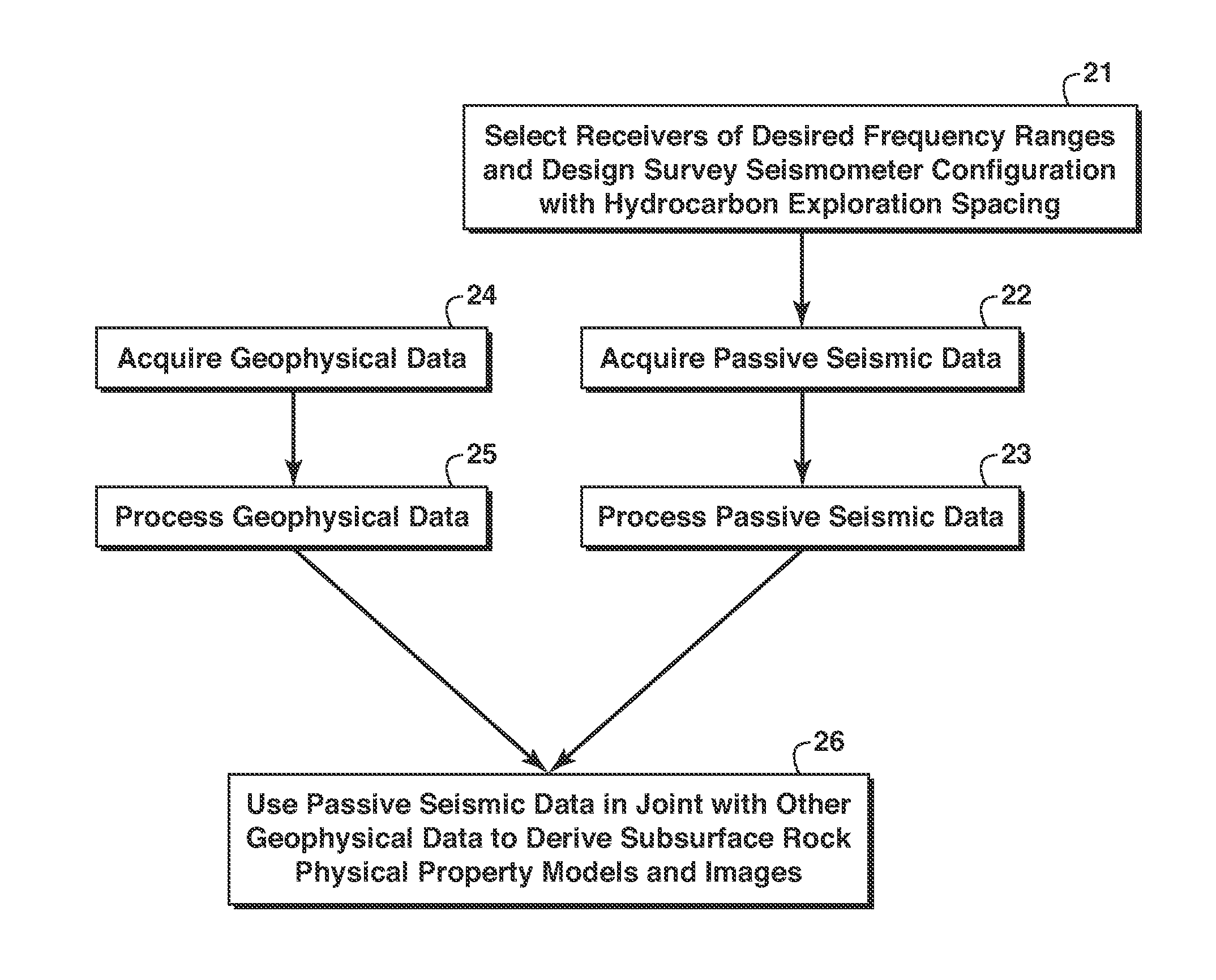Hydrocarbon Detection With Passive Seismic Data
a technology of passive seismic data and hydrocarbon detection, applied in the field of hydrocarbon exploration, can solve the problems of inability to provide reliable and useful data for current active source seismic acquisition techniques, inability to generate powerful explosions necessary to generate lower frequency seismic survey activity, and inability to accurately detect the activity of seismic surveys
- Summary
- Abstract
- Description
- Claims
- Application Information
AI Technical Summary
Benefits of technology
Problems solved by technology
Method used
Image
Examples
Embodiment Construction
[0028]Other types of geophysical data help fill the frequency gap below active-source seismic to a limited degree. FIG. 1 shows approximately where the various types of geophysical data fit into the picture. The solid line curve 11 represents active seismic data. The approximate useful frequency range for controlled source electromagnetic (“CSEM”) data is represented by curve 12, and curve 13 shows the frequency range for gravity and NMO (normal moveout) velocity data. Even with these known data types supplementing at the very low frequencies, there remains the frequency gap 10. The present invention uses passive source seismic data, primarily earthquake data, to fill this gap, and teaches how to exploit these data.
[0029]Passive seismic data have potential to fill the gap because such data can be rich in low frequency information. Earthquakes including tremors, volcanos, and disturbances of all magnitudes, and tidal waves are examples of passive seismic sources, which can be defined...
PUM
 Login to View More
Login to View More Abstract
Description
Claims
Application Information
 Login to View More
Login to View More - R&D
- Intellectual Property
- Life Sciences
- Materials
- Tech Scout
- Unparalleled Data Quality
- Higher Quality Content
- 60% Fewer Hallucinations
Browse by: Latest US Patents, China's latest patents, Technical Efficacy Thesaurus, Application Domain, Technology Topic, Popular Technical Reports.
© 2025 PatSnap. All rights reserved.Legal|Privacy policy|Modern Slavery Act Transparency Statement|Sitemap|About US| Contact US: help@patsnap.com



